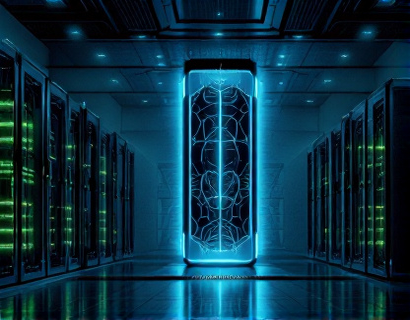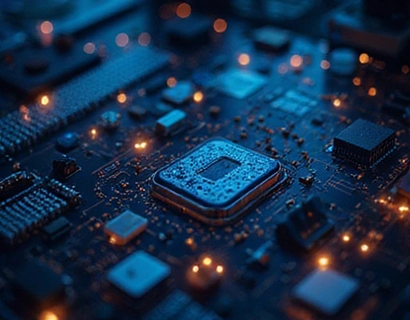Transforming Registry Management: The Power of Blockchain Technology
In an era where data integrity, security, and efficiency are paramount, the traditional methods of registry management are being revolutionized by blockchain technology. This article delves into how blockchain-powered registry solutions are redefining data management, offering enhanced security, transparency, and efficiency. Whether you are a professional in the field of registry management, a data security advocate, or an IT and software development team member, understanding the potential of blockchain in this domain is crucial for staying ahead in the digital transformation journey.
Understanding Blockchain in Registry Management
Blockchain, at its core, is a decentralized digital ledger that records transactions across multiple computers in such a way that the registered transactions cannot be altered retroactively. This inherent characteristic makes blockchain an ideal technology for registry management, where data accuracy and immutability are essential.
The application of blockchain in registries involves creating a distributed database where each block contains a cryptographic hash of the previous block, a timestamp, and transaction data. This structure ensures that once data is recorded, it becomes nearly impossible to alter without detection, thus providing an unparalleled level of security and trust.
Enhanced Security Through Blockchain
One of the most significant advantages of blockchain-powered registry solutions is the enhanced security they offer. Traditional registry systems are often centralized, making them vulnerable to cyber-attacks and data breaches. In contrast, blockchain's decentralized nature distributes data across a network of nodes, reducing the risk of a single point of failure.
Each transaction in a blockchain is encrypted and linked to the previous transaction through complex algorithms, creating a chain that is resistant to tampering. Any attempt to alter data in a block would require changing all subsequent blocks, a task that is computationally infeasible for malicious actors. This robust security framework ensures that registry data remains intact and trustworthy.
Transparency and Traceability
Blockchain technology brings transparency to registry management by providing a clear and immutable record of all transactions. Every change made to the registry is time-stamped and visible to all participants in the network, ensuring accountability and traceability.
This level of transparency is particularly valuable in industries such as government, healthcare, and finance, where stakeholders need to verify the authenticity and integrity of data. For instance, in land registry systems, blockchain can provide a transparent and tamper-proof record of property ownership, reducing disputes and fraud.
Efficiency and Streamlined Processes
Blockchain-powered registry solutions not only enhance security and transparency but also streamline processes, leading to increased efficiency. Traditional registry management often involves manual data entry, paper-based records, and multiple intermediaries, which can be time-consuming and error-prone.
By automating these processes through smart contracts and decentralized applications (dApps), blockchain reduces the need for manual intervention. Smart contracts are self-executing contracts with the terms of the agreement directly written into code. They automatically trigger actions when predefined conditions are met, ensuring that processes are executed accurately and promptly.
For example, in the context of supply chain management, blockchain can track the movement of goods from origin to destination, updating the registry in real-time. This eliminates the need for manual checks and paperwork, reducing delays and costs.
Case Studies and Real-World Applications
The potential of blockchain in registry management is not theoretical; it is being implemented in various sectors with tangible results. One notable example is the use of blockchain in voting systems. Blockchain-based voting platforms ensure the integrity and transparency of elections by providing an immutable record of votes, reducing the risk of fraud and increasing voter trust.
In the realm of identity verification, blockchain can provide individuals with control over their personal data. A decentralized identity system allows users to manage and share their identity information securely, reducing the burden on regulatory bodies to maintain and verify identities.
Another area where blockchain shines is in intellectual property management. Artists and creators can use blockchain to prove ownership and track the usage of their work, ensuring fair compensation and preventing unauthorized use.
Challenges and Considerations
While the benefits of blockchain in registry management are clear, there are challenges and considerations that organizations must address. One of the primary concerns is scalability. Current blockchain technologies, particularly public blockchains like Bitcoin and Ethereum, face limitations in transaction throughput and processing speed.
To overcome this, many blockchain solutions are moving towards private or consortium blockchains, which offer better performance and scalability while maintaining the security and transparency benefits. Additionally, the integration of blockchain with existing systems requires careful planning and expertise to ensure seamless operation.
Regulatory compliance is another critical aspect. As blockchain technology is still evolving, regulatory frameworks are still developing. Organizations must stay informed about local and international regulations to ensure compliance while leveraging blockchain for registry management.
Future Trends and Innovations
The future of blockchain in registry management is promising, with ongoing innovations set to address current challenges and expand its applications. One such trend is the development of interoperable blockchains, allowing different blockchain networks to communicate and share data seamlessly. This interoperability can enhance the utility of registry systems by enabling cross-platform data exchange and collaboration.
Another area of innovation is the integration of blockchain with other emerging technologies such as the Internet of Things (IoT) and artificial intelligence (AI). IoT devices can generate and record data on a blockchain, ensuring that sensor readings and device interactions are secure and verifiable. AI can be used to analyze blockchain data, providing insights and automating decision-making processes.
Furthermore, the concept of self-sovereign identity, where individuals have full control over their digital identities, is gaining traction. Blockchain-based identity solutions empower users to manage their personal data, choose who to share it with, and revoke access when necessary, enhancing privacy and security.
Conclusion
Blockchain-powered registry solutions are transforming the way data is managed, secured, and shared. By offering enhanced security, transparency, and efficiency, blockchain is addressing the critical needs of professionals and organizations in various sectors. As the technology continues to evolve, its applications will expand, driving digital transformation and building trust in an increasingly data-driven world.
For those involved in registry management, data security, and digital transformation, embracing blockchain technology is not just an option but a necessity. By understanding and leveraging the potential of blockchain, organizations can stay competitive, compliant, and innovative in the face of evolving challenges.










































